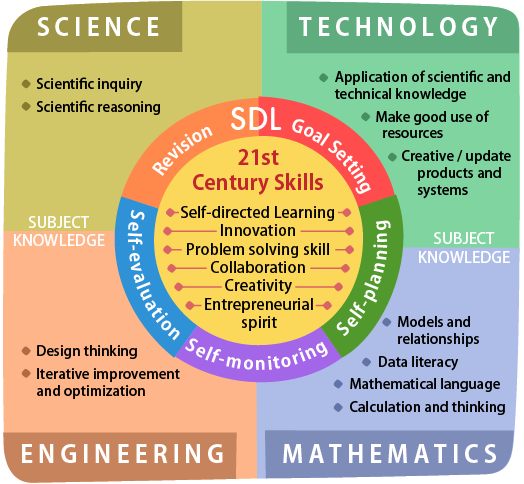STEM is the acronym of Science, Technology, Engineering and Mathematics. STEM education is positioned to develop diverse student potentials so as to meet future challenges. With the fast changing world and inundated information, building students’ 21st century skills (also known as generic skills) is key to the development of their potentials. Through STEM education, students are enable to build solid knowledge and skills of STEM disciplines, and strengthen their ability “to integrate and apply their knowledge and skills across different subject disciplines through solving daily life problems with practical solutions and innovative designs” (CDC, 2015, p. 2).
Good STEM education is featured by enabling students to integrate knowledge and skills across different STEM disciplines as well as its connection to real life issues and/or community. Internationally, there is a growing trend addressing integrated STEM, (or sometimes known as interdisciplinary STEM or integrative STEM), emphasizing the integration and application of two or more STEM disciplines in solving real life problems (Bryan, et al., 2015; Bybee, 2014; English, 2016; Johnson, 2013; Kelley&Knowles, 2016; Laboy-Rush, 2011; Moore, et al, 2015; Sanders, 2009). The integration is also about the connection between concepts and disciplinary practices that students are enabled to experience what scientists, engineers and mathematicians tend to do when they undergo investigation or solve problems in real life. Such integration necessitates self-directed learning and a student-centred approach.
It is not necessary to pursue the integration of all four STEM disciplines at one time. The emphasis is on raising the awareness of the importance of knowledge integration and realizing the usefulness of different STEM related subjects. The integration should enhance learning and achieve the positive learning outcomes among students which is shown at the center of the conceptual framework for STEM (figure 1).







